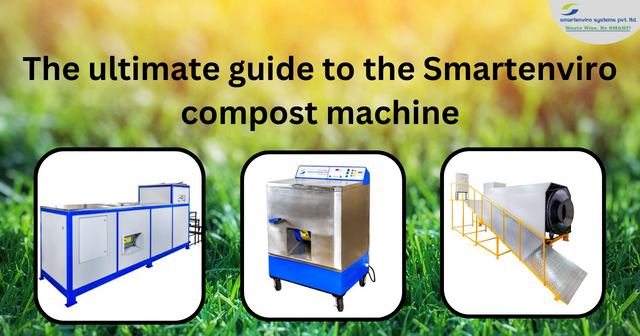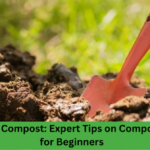Introduction
Making your compost improves the quality of your soil, gives you a steady supply of potting material for containers, and saves you money by eliminating the need to buy giant bags from a gardening store. Composting can be confusing, and many people give up trying. Some individuals avoid compost making machine because they believe it stinks or is unclean. So we made this composting guide.
Techniques of Composting
The composter machine recreates the natural decaying process inside. Soil microorganisms devour the organic waste you put in your compost bin, feasting on the carbon and breaking it down. It creates fibre-rich humus rich in carbon, nitrogen, phosphorus, and potassium. Compost microorganisms and you have a symbiotic relationship. You feed them, and they make nutrient-rich compost for your plants.
The initial stage of composting lasts only a few days. During this stage, mesophilic microorganisms (those that grow between 68oF and 113oF) break down organic material and raise the compost pile’s temperature.
In the second stage, mesophilic and thermophilic microbes break down organic material. It causes temperatures in your compost bin to rise. Therefore you must aerate it to supply oxygen for mesophilic microbes. It is a vital step since high temperatures might destroy the good microorganisms in your compost container.
The ultimate stage of composting takes months. When thermophilic microbes eat most organic molecules, mesophilic species take over. It allows them to turn organic matter into nutrient-rich humus for your garden.
How to start composting
Composting is a relatively easy-going procedure, and we’ll walk you through making and maintaining your pile in this article. What may and cannot go into your compost bin is the first thing you need to know. Composting requires a combination of biodegradable food waste composter scraps and soil for optimal results (just some dug-up topsoil from your garden is fine). To get you started, here is a list of the lawn and house waste items you can add to your manure bin.
1. Placement :
Now that you know what organic waste composter machine you can compost. Consider where to put your pile. Most compost containers have an open bottom, so you may start constructing your compost on bare dirt where microorganisms can reach the contents.
If you have a paved outside patio or courtyard, you may get sealed compost containers to keep everything contained. Some can fit beneath a kitchen sink if you don’t have an outdoor room. Even persons with modest outdoor spaces may generate their compost using a compact composting bin or worm composter.
2. Drainage :
After settling on a suitable location, the following stage in making compost is to ensure that the bottom has proper drainage. Straw is the most excellent material for this, as it’s, of course, compostable but will also ensure that no water sits and goes inactive within your bin. You may use twigs and thin sticks instead of straw if you can’t find any.
3. Put in Layers :
Start adding in your organic waste converter biodegradable items as and when they are available to you. If possible, try layering wet and dry things alternately (a layer of vegetable scraps followed by a layer of cardboard, etc.) Although this isn’t essential, it does assist in hurrying up the composting procedure, so you’ll get that black gold in a great deal faster time!
4. Green Manure :
Another beneficial supplementary layer for your compost heap between wet and dry layers is ‘green manure.’ This category includes grass clippings, plant clippings, and any other garden debris that has recently been cut or mowed. As microorganisms work on these, they will recycle nutrients into your soil.
5. Cover :
Always cover your compost with the lid. If you’re using a compost bin, it will likely include a cover for this function. If you’re making a compost pile in the corner of your yard, cardboard or wooden planks will do. You can cover your compost with plastic sheeting, but using recyclable plastic or something you no longer need is best.
The primary purpose of covering your compost is to keep the moisture you’ve added into your compost within the pile itself. It encourages the formation of humidity that the microorganisms will produce. Covering your compost prevents rain from turning into slush or mud.
6. The Finished Product :
After a few months, the microorganisms will have biodegraded your compost into nutrient-rich soil. At this point, you can harvest it and put it back in your garden for various uses. You can use your black gold to improve soil structure, nourish plants, and retain water in pots and containers, making it one of the most effective gardening procedures.
Containing a steady supply of compost can help you save a lot of money while lowering your environmental impact. Smartenviro has innovative technology that allows for an automated and odorless composting process. In this article, you’ll find out how to keep bugs away without using harmful pesticides.



